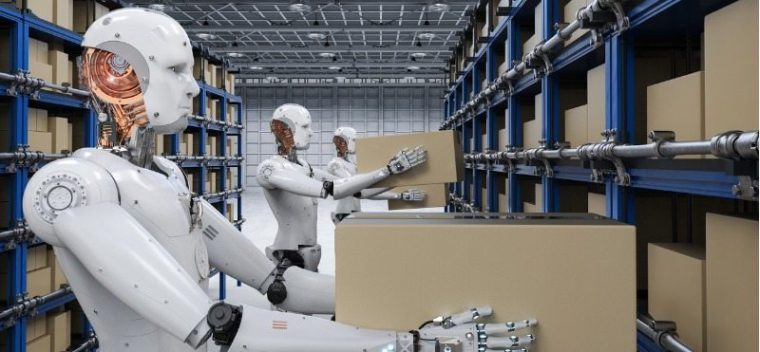
The evolution of robots began years ago and the process has reached a point where the humanoids have become very skillful and graceful in their operations so much so that they could begin taking over the labor forces in warehouses in a few years to come.
From Stumbling to Soaring
The Defense Advanced Research Projects Agency (DARPA) of the Pentagon organized a contest where robots were required to execute a variety of human jobs, such as opening doors, using power tools, and driving golf carts.
In the videos recorded during the Darpa Challenge in 2015, the robots were seen struggling and mostly failing to accomplish these tasks with most of them stumbling and falling due to the rigidity of their programmed movements.
However, years later, companies have continued to develop and polish these machines giving them fluid movements, and skills in various fields and the humanoids now face the potential of being employed in places such as factories in a couple of years.
Here. They literally did a blooper reel.pic.twitter.com/dh3WoON4jR
— Carole Cadwalladr (@carolecadwalla) December 29, 2020
According to Jerry Pratt, a senior research scientist at the nonprofit Institute for Human and Machine Cognition in Florida, due to the technological advances that have been made thus far, robots today might finish the Darpa challenge with few accidents and in about a fourth of the time it took his robot to complete it.
Pratt led the team that finished second in the contest eight years ago. He has since joined Figure AI as a cofounder where they are developing a humanoid robot for warehouse operations and have received $70 million in financial capital.
In an interview with Wired, Pratt explained that through the improvements that have occurred in machine learning over the past ten years, more sophisticated computer vision has made it much simpler for computers to navigate challenging settings and perform tasks like ascending stairs and grasping items.

It is now conceivable to fit enough power into a humanoid robot such that it can move its legs swiftly enough to balance dynamically and to steady itself when it slips or misjudges a step, just as humans can, as a result of the development of more power-dense batteries for electric vehicles.
With these new abilities, Pratt revealed that Figure AI’s robot was already taking steps in a makeshift warehouse in California.
The Advancements in Humanoid Robots
However, Figure is not the only company banking on the development of humanoid robots. Another company is Agility Robotics founded by Jonathan Hurst, an Oregon State University professor. Hurst also took part in the Darpa challenge where he featured a demonstration of a walking robot developed by his company.
For some time now, Agility has been developing legged robots, but according to Hurst, the company has chosen to approach locomotion from a physics-first perspective rather than by mimicking the mechanics of human limbs. As a result, Agility’s humanoids look less like humans and more like ostriches.
All in all, Agility has made progress in its development and its robots dazzled the crowds with demonstrations of warehouse activities like taking totes from shelves and placing them onto conveyors totally autonomously at a manufacturing industry convention called ProMat in March.
With a 99% success rate over about 20 hours of live demos, Digit still took a couple of falls at ProMat.
We have no proof, but we think our sales team orchestrated it so they could talk about Digits quick-change limbs and durability. #ConspiracyTheories pic.twitter.com/aqC5rhvBTj
— Agility Robotics (@agilityrobotics) April 6, 2023
While there already exists many manufacturing and warehousing robots that move on wheels rather than legs, according to Melonee Wise, CTO of Agility, legs are significantly preferable in many circumstances, especially for businesses that cannot afford to completely restructure their operations around automation.
Wise stated that despite having a team of wheeled warehouse robots, humanoid robots are better able to maneuver through narrow areas and climb stairs, ramps, and uneven terrain. They can even bend over or reach up while working.
A challenge that continues to face this industry is the cost of developing such machines but Pratt’s counterpart, Figure’s CEO Brett Adcock believes that if there is enough demand to speed up manufacturing it should be possible to produce humanoids for the same price as making a car.